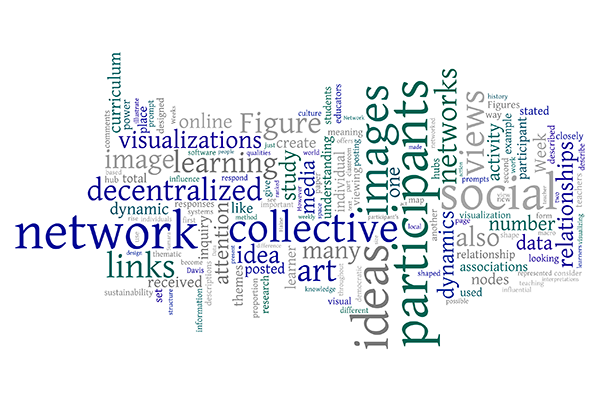International Journal of Education & the Arts | |
Volume 16 Number 4 |
February 5, 2015 |
Visualizing the Collective Learner through Decentralized NetworksJuan Carlos CastroConcordia University, Canada
Citation: Castro, J. C. (2015). Visualizing the collective learner through decentralized networks. International Journal of Education & the Arts, 16(Number 4). Retrieved [date] from http://www.ijea.org/v16n4/.Abstract Understandings of decentralized networks are increasingly used to describe a way to structure curriculum and pedagogy. It is often understood as a structural model to organize pedagogical and curricular relationships in which there is no center. While this is important it also bears introducing into the discourse that decentralized networks are also dynamic. These dynamics have been observed in nature, social behavior, and are now coded into the algorithms of social media. As art educators utilize social media to support teaching, it is important to consider the dynamics of decentralized networks and how they can influence attention and learning of a collective learner. This paper presents a method for visualizing ideation and attention drawn from an empirical study of social networking with teens in an art classroom. The visualizing of these dynamics provides art educators a method of reflecting on teaching and learning to better challenge assumptions, observe trends, and respond to the individual and the collective learner.
Visual Abstract
EDITOR'S NOTE: This manuscript was accepted for publication in August of 2012, but misplaced in the transition between editors. I apologize to the author for the delay in posting this article. CMT |

